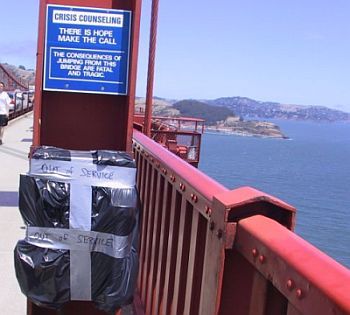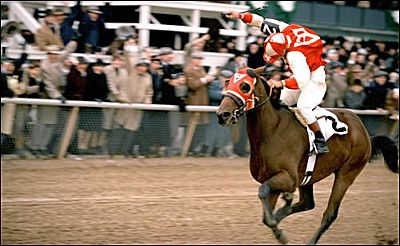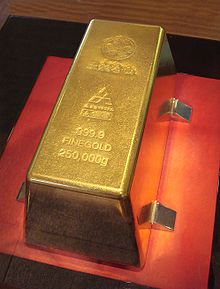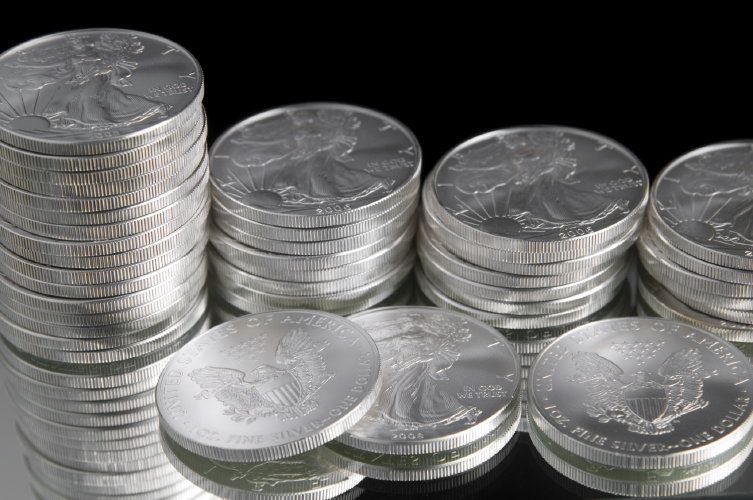2011 GLOBAL FORECAST
Featured Trades: (SPX), (QQQQ),(CSCO), (XLF), (BAC), (EEM),(EWZ), (RSX), (PIN), (FXI), (TUR), (EWY), (EWT), (IDX), (GS), (MS),
(TBT), (JNK), (PHB), (HYG), (PCY),
(FXC), (FXA), (YCS), (FXY), (CYB),
(FCX), (VALE), (DIG), (RIG), (JOY), (KOL), (CCJ), (FSLR), (UNG), (JJG), (MOO), (DBA), (MOS), (MON), (AGU), (POT), (CCJ), (NLR), (PHO), (FIW), (CORN),
(GLD), (DGP), (SLV), (PTM), (PALL), (ESS)
The Thumbnail Portfolio
Equities
Bonds
Currencies
Commodities
Precious Metals
Real Estate
1) The Economy. What a difference a quarter makes! It was only last summer that the Golden Gate Bridge Authority closed down its suicide hotline because it kept exceeding its plan minutes. Now, happy days are here again. Of course, you have two guys to thank for this love fest of all asset classes. Ben Bernanke's quantitative easing unleashed $600 billion worth of bond buying on the markets, the net effect will be to add 1% to GDP growth in 2011. Barrack Obama's tax compromise with the Republicans easily adds another 1%. So literally in the span of one week I was forced to ratchet up my own forecast for economic activity from a flaccid 2% to a positively virile 4%.

Cancelled Because of Lack of Interest
-
I saw all this setting up last summer, which is why I suddenly flipped to a bullish stance on global equities on September 1 (click here for 'My Equity Scenario for the Rest of 2010' and click here for 'Bring on the Bernanke Put' ). Once the tax deal was made I knew the market would rally for the rest of the year, close on its highs, and continue well into the next. That is exactly what we have gotten so far.
Going forward, we are looking at the best macro trading environment of all time. Here are the reasons why:
1) Government policies have created a Goldilocks scenario on steroids: massive stimulus with zero inflation.
2) Global growth at should reach a heady 5% rate, the best in years.
3) Financial markets have suddenly had to price in an upgrade in US growth from 2% to 4%, and are rushing to catch up with the new reality.
4) Asian economies will see blistering growth rates of 5%-10%.
5) Europe Dead in the water at 1% growth.
6) Liquidity is huge, with $2 trillion is sitting on the sidelines, so there is plenty of dry powder to keep the fireworks going for a while.

Suddenly, Goldilocks is Taking Steroids
-
So, party on like there is no tomorrow, and consequence is a corny game show. However, the prudent will be anticipating the inevitable hangover, potentially a horrendous one. This is why the current rally will end, possibly as early has the first quarter.
1) The fundamentals are now so obvious that you can expect everyone to pile in, giving us a year that is front end loaded in every asset class performance. Then you can look for trouble in River City.
2) The market can still spread the joy if the ten year Treasury bond yields up to 4%. Take it to 5%, a real possibility, and it is game over. Move this certainty forward if the blatant runaway inflation in all commodities, food, and energy start to feed into headlines numbers, like the CPI.
3) Crude oil prices of $100 a barrel are now a given. Take them to $120 or more, and look out below.
4) Obama has provided states and municipalities with $400 billion in emergency funding over the last two years. That is now expiring, and with a Republican House of Representatives, there is zero chance this will be renewed, quickly chopping a gut punching 3% off GDP growth.
5) You can count on another European country to blow up. This is what cost us two quarters last year. Personally, I think that in Spain, the rain will fall mainly on the plain.
6) The US government will soon hit its $14.3 trillion debt ceiling. Expect Republicans to refuse to raise it and make maximum hay out of this. This will spook foreign investors in American stocks and bonds and the dollar. After all, if you can't own it, then you have to break it.
7) We have had a one way market for so long that the quant crowd is going to be baying for a reversion to the mean.
8) The QE2 well will start to run dry. Worst case, after watching stock prices go ballistic, Ben Bernanke decides that his reflationary program is working so well that he can afford to end it early, downsizing it to QE 1 ?.
9) This is the most important point of all: All of these are likely to hit the market at the same time, sometime in March or April.
This is why I think 2011 is setting up for a repeat of 2010. Think of it as 'V' shaped 'ground hog year', much like we saw in 2010. A supercharged first quarter is followed by two anesthetic ones. Whether we can find a new set of drivers over the summer will determine if we see a strong fourth quarter and another Santa Claus rally, or lapse back into a double dip and a lost decade. Watch this space.

But How Long Will the Fireworks Last?
-
2) Equities (SPX), (QQQQ),(CSCO), (XLF), (BAC), (EEM),(EWZ), (RSX), (PIN), (FXI), (TUR), (EWY), (EWT), (IDX), (GS), (MS). Quantitative easing and our renewed low tax rates seem to be favoring equities more than any other asset class. So on the global stage I want to buy the preeminent lagging market, and that is the US. US corporations are making money hand over fist right now, as incredibly aggressive cost cutting drops straight to the bottom line. Free cash flows are rising at an amazing 20% to 30% a year.
Yet, with earnings for the S&P 500 expected to come in at $95 a share, that puts price earnings multiples at 13.3, towards the low end of its historic 10-20 range. A chip shot takes the (SPX) up 12% to 1,400. If it really get the bit between its teeth, a challenge of the all time high at 1,475 is not impossible before we see a major pull back. That would set up a double top that could define the year, if not the decade.
-
Furthermore, I want to buy the principal lagging sector in the lagging market, and that is financials (XLF), (BAC). I expect the brokers to do well in this environment, like Goldman Sachs (GS) and Morgan Stanley (MS), as rising stock prices bring rising trading volumes. This will be the year that Goldman Sachs outperforms gold.
To round out the portfolio, I want to own technology (QQQQ), (CSCO), energy (COP), (XOM), and (OXY), and commodity producing stocks. This is a rising tide that will not lift all boats, so I prefer a few rifle shots in these specific areas.
I expect emerging markets to do well again, but not to deliver the unbelievable triple digit returns we saw in 2010. Think the BRIC's, Brazil (EWZ), Russia (RSX), India (PIN), and China (FXI), with South Korea (EWY), Taiwan (EWT), Turkey (TUR), and Indonesia (IDX) thrown in for a more sophisticated flavor. But as long as China is fighting inflation with interest rate hikes and monetary tightening, performance here is likely to be muted. Keep an itchy trigger finger on your mouse, because when the turn comes, there will be no place to hide. And beat the rush by booking that house in the Hamptons, the lakefront property at Tahoe, or the mega yacht in the Mediterranean, early.

It's Off to the Races for US Equities
-
3) Bonds (TBT), (JNK), (PHB), (HYG), (PCY). Shorting the world's most overvalued asset has got to be the big trade for 2011. I'm talking about 30 year US Treasury bonds. The relentless whirring of the printing presses is so loud that they keep me awake at night, even though, according to Mapquest, I live 2,804.08 miles away.
What will be unique with this meltdown is that it will be the first collapse of a bond market in history in a deflationary environment. It is not inflationary fears that will execute the coup de grace for the long bond, it will be the sheer volume of issuance. The Feds have to sell nearly $2.5 trillion of debt to cover a massive budget deficit and to refund maturing paper, easily the largest amount in history.
Pile on top of that billions more in offerings from states and municipalities bleeding white. By end 2010 total government debt will rocket to a staggering 350% of GDP. At some point, the world runs out of buyers. The ten year Treasury bond yield began its inexorable climb last summer from 2.4% to today's 3.4%, and it is clearly on its way to 4.20% or higher.? Even Moody's is talking about a ratings downgrade for the US debt, not that we should give that disgraced institution any credibility whatsoever. It's just a question of how many sticks it takes to break a camel's back.
I am a worshipper of the (TBT), a 200% leveraged bet that long bonds are going down. It has clawed its way back up from $30 to $41, and $52 looks like a chip shot for the first half. Longer term this ETF could hit $200. If interest rates double from the current levels, a virtual certainty, so does America's debt service, from the current 4% to 8% of the budget. If we continue on our current borrowing path, it double's again to 16%, a figure equal to our total defense spending, or some $800 billion a year. That's when the sushi really hits the fan.

-
Corporate debt, which see interest rates moved more by credit quality considerations than the yield curve, will continue to trade like high yielding equities, as they did for most of 2010. After last year's cornucopia of bankruptcies seen during the crash, investors are also showing a preference for paying up for securities more senior in the capital structure. That means you're going to have to employ an equity type strategy for this corner of the fixed income market. The global liquidity surge that free money is spawning will boost corporate bonds as much as equities, knocking yields down further.
With the world still in risk accumulation mode, that augers well for the riskiest corner of asset class - junk bonds, whose default rates are not coming in anywhere near where they were predicted just a few months ago. Buy the junk ETF's like (JNK), (PHB), and the (HYG) here for a trade. But don't expect a lot. This could be a year when your principal show zip appreciation and your total income comes entirely from the coupon, which is still running at a loft 7.5% Just don't forget to unload at the first sign of an equity market collapse.
As for municipal bonds, we have only entered round one of a decade of fiscal woes by local government. Still, there is a case for owning munis. No matter what anyone says, taxes are going up, and when they do, this will increase muni values. So if you hate paying taxes, go ahead and buy this exempt paper, but only with the expectation of holding it to maturity. Liquidity could get pretty thin along the way.
Perhaps the best place to live in bond world is in emerging market debt, where you can participate via the (PCY). At least there, you have the tailwinds of strong economies, little outstanding debt, appreciating currencies, and already high interest rates.
4) Currencies (FXC), (FXA), (YCS), (FXY), (CYB). Any trader will tell you to never bet against the trend, and the overwhelming direction for the US dollar for the last 230 years has been down. The only question is how far, how fast. Going short the currency of the world's largest borrower, running the greatest trade and current account deficits in history, with a diminishing long term growth rate is a no brainer.
But once it became every hedge fund trader's free lunch, and positions became so lopsided against the buck, a reversal was inevitable. We seem to be solidly in one of those periodic corrections, which began a months ago, and could continue for several more months, or even years. The euro has its own particular problems, with the cost of a generous social safety net sending EC budget deficits careening. Just look at Greece, with a budget deficit of 12.7% of GDP against the 3% it promised on admission to the once exclusive club. Unwinding of 'hot' longs could easily take us to the $1.20's against the euro, and new momentum driven longs could take us to the $1.10's.
For me, the big currency trade of the year will be to short the Japanese yen. The problems in the Land of the Raising Sun are almost too numerous to count: the world's highest debt to GDP ratio, a horrific demographic problem, and flagging export competitiveness against neighboring China and South Korea, and the world's lowest developed country economic growth rate. Most importantly, Japanese interest rates are likely to remain etched in stone near zero, while rates in the rest of the world rise. That creates a big carry trade that every hedge fund will be gunning for, leading to yen selling and dollar buying in large size.
My play here is a double leveraged short yen ETF, the (YCS), which last traded at $16, and will trade at $24 if the yen drops from ?80 to ?100, as I expect.
For a sleeper, buy the Chinese Yuan ETF (CYB) for your back book, but don't expect more than single digit returns. The middle Kingdom with move Heaven and earth to keep its appreciation modest to maintain their crucial export competitiveness.

Do They Know?
-
5) Commodities (FCX), (VALE), (DIG), (RIG), (JOY), (KOL), (CCJ), (FSLR), (UNG), (JJG), (MOO), (DBA), (MOS), (MON), (AGU), (POT), (CCJ), (NLR), (PHO), (FIW), (CORN). This is my favorite asset class for the next decade, as investors increasingly catch on to the secular move out of paper assets into hard ones. Don't buy anything that can be manufactured with a printing press. Focus instead on assets that are in short supply, are enjoying an exponential growth in demand, and take five years to bring new supply online. The Malthusian argument on population growth also applies to commodities; hyperbolic demand inevitably overwhelms linear supply growth.
Of course, we're already eight years into what is probably a 20 year secular bull market for commodities and these things are no longer as cheap as they once were. You'll never buy copper again at 85 cents a pound, versus today's $4.45. Many commodities, like cotton and rare earths saw triple digit returns in 2010, so don't expect a repeat this year. You are going to have to allow these things to breathe. Ultimately this is a demographic play that cashes in on rising standards of living in the biggest and highest growth emerging markets. You can start with the traditional base commodities of copper and iron ore.
The derivative equity plays here are Freeport McMoRan (FCX) and Companhia Vale do Rio Doce (VALE). Add the energies of oil (DIG), coal (KOL), uranium (NLR), and the equities Transocean (RIG), Joy Global (JOY), and Cameco (CCJ). Oil has in fact become the new global de facto currency (along with gold), and probably $30 of the current $90 price reflects monetary demand, on top of $60 worth of actual demand from consumers. That will help it grind to $100 sometime in early 2010, and we could spike as high as $120.
Don't forget alternative energy, which will see stocks dragged up by the impending spike in energy prices. My favorite here is First Solar (FSLR). Skip natural gas (UNG), because the discovery of a new 100 year supply from fracting and horizontal drilling in shale formations is going to overhang this subsector for a long time.
The food commodities are also a great long term Malthusian play, with corn (CORN), wheat, and soybeans (JJG) coming off the back of great returns in 2010. These can be played through the futures or the ETF's (MOO) and (DBA), and the stocks Mosaic (MOS), Monsanto (MON), Potash (POT), and Agrium (AGU). The grain ETF (JJG) is another handy play. Through an unconventional commodity play, the impending shortage of water will make the energy crisis look like a cake walk. You can participate in this most liquid of asset with the ETF's (PHO) and (FIW).

-
6) Precious Metals (GLD), (DGP), (SLV), (PTM), (PALL). With gold's whopping great $50, 4% pull back yesterday, I have been deluged by readers asking if this was the peak, if it was the final blow off top, and if gold is finished as an asset class. My answers are no, never, and not on your life. Obama has not suddenly become a paragon of fiscal restraint. Bernanke has not morphed into a tightwad overnight. When I pull a dollar bill out of my wallet, it's as limp as ever.
If you forgot to buy gold at $35, $300, or $800, another entry point is setting up for those who, so far, have missed the gravy train. Let's face it, the precious metals have a severely overbought condition to work off before we make substantial new highs. Remember, the is the asset class that takes the escalator up and the elevator down, and sometimes the window. We could be seeing a replay of 2010, where the yellow metal traded in a sideways range for many months before blasting through to a new all time high and quickly tacking on 25%. Start scaling in around the 200 day moving average at $1,261.
If the institutional world devotes just 5% of their asset to a weighting in the yellow metal, and an emerging market central bank bidding war for gold reserves continues, it has to fly to at least $2,300, the inflation adjusted all time high, or higher. ETF players can look at the 1X (GLD) or the 2X leveraged gold (DGP).
I would also be using the next bout of weakness to pick up the high beta, more volatile precious metal silver (SLV), which I think could hit $50 in the foreseeable future. Silver's 200 day moving average is all the way down at $21, so I doubt it will ever get there. The $50 day moving average at $27 might be a more realistic reentry point. Palladium (PALL) and platinum (PPLT)), which have their own auto related long term fundamentals working in their favor.

-

-
7) Real Estate (ESS). The agony is going to continue in this world of hurt, and any allocation to either residential or commercial real estate is going to be dead money for the next decade. If you strip away the industry fig leaves, and ignore the paid apologists, the excesses in this sector are truly of Biblical proportions. 'Official,' shadow, and bank inventories, and another 1.5 million imminent option arm induced foreclosures, probably mean there is five years worth of supply out there.
Bankrupt Fannie Mae is taking down 75% of the new mortgage in the secondary market, the FHA is taking almost all of the rest, and there is no way the socialization of the mortgage market can continue indefinitely. The jumbo market has ceased to exist except at whopping big premiums, and it is raining McMansions in tony neighborhoods everywhere.
The demographic pressure of 80 million retiring and downsizing baby boomers easily add another five years of supply. The commercial sector is even worse, with valuations off 50%, some 5% of the industry's $1.8 trillion loan book in default, and cap rates soaring from 5% to 8-9%. The refinancing needs of this industry are gargantuan, and except for some triple 'A' paper taken down by the TALF, there is no bid other than from the vultures inhabiting the distressed world.
No one seems to be taking into consideration the fact that huge chunks of the office market are being permanently emptied out by the Internet, which is sending people home to work, transferring their jobs overseas, or vaporizing them altogether. If the liquidity induced surge in stock prices continues, I might even be enticed into shorting some of the big listed REITS, like Essex Properties (EES), which has nearly doubled from its lows, and is choking on its high prices California exposure.
Only buy a home if your wife is nagging you about living in that cardboard box under the freeway overpass. But expect to put up your first born child as collateral, and bring in your entire extended family in as cosigners, if you want to get a bank loan.

